-
 Bitcoin
Bitcoin $116400
-0.36% -
 Ethereum
Ethereum $4033
3.40% -
 XRP
XRP $3.302
-1.26% -
 Tether USDt
Tether USDt $1.000
-0.02% -
 BNB
BNB $796.1
1.67% -
 Solana
Solana $177.8
1.89% -
 USDC
USDC $0.9999
0.00% -
 Dogecoin
Dogecoin $0.2314
4.09% -
 TRON
TRON $0.3381
0.14% -
 Cardano
Cardano $0.7989
1.22% -
 Stellar
Stellar $0.4496
-1.84% -
 Chainlink
Chainlink $20.42
9.42% -
 Hyperliquid
Hyperliquid $41.17
0.88% -
 Sui
Sui $3.914
3.77% -
 Bitcoin Cash
Bitcoin Cash $584.7
1.52% -
 Hedera
Hedera $0.2632
-0.54% -
 Avalanche
Avalanche $24.09
3.40% -
 Ethena USDe
Ethena USDe $1.001
-0.02% -
 Litecoin
Litecoin $123.2
1.33% -
 Toncoin
Toncoin $3.318
-0.04% -
 UNUS SED LEO
UNUS SED LEO $8.984
-0.05% -
 Shiba Inu
Shiba Inu $0.00001323
2.85% -
 Uniswap
Uniswap $10.90
4.41% -
 Polkadot
Polkadot $3.999
3.34% -
 Dai
Dai $1.000
0.01% -
 Cronos
Cronos $0.1630
9.64% -
 Bitget Token
Bitget Token $4.484
0.82% -
 Monero
Monero $272.4
2.44% -
 Pepe
Pepe $0.00001173
6.03% -
 Aave
Aave $290.8
2.88%
How to set up a stop-profit and stop-loss on Bybit?
Bybit offers stop-loss and take-profit orders to manage risk; set them strategically to limit losses and secure profits in crypto trading.
Apr 01, 2025 at 10:01 am
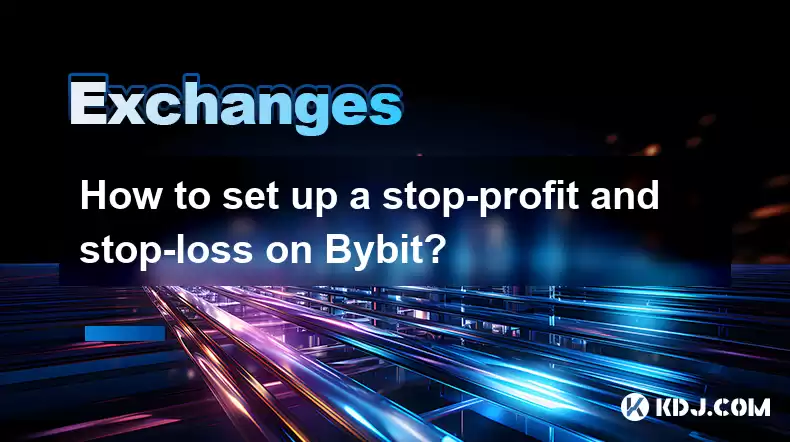
Understanding Stop-Loss and Take-Profit Orders on Bybit
Bybit, a popular cryptocurrency exchange, offers a robust suite of order types to help manage risk and secure profits. Crucially, this includes stop-loss and take-profit orders, essential tools for any serious cryptocurrency trader. A stop-loss order automatically sells your asset when the price drops to a predetermined level, limiting potential losses. Conversely, a take-profit order automatically sells your asset when the price rises to a specified level, securing your profits. Understanding and implementing these orders is vital for successful trading on Bybit.
Setting Up a Stop-Loss Order on Bybit
Setting a stop-loss order on Bybit is straightforward. First, navigate to the trading interface for the specific cryptocurrency pair you're trading. You'll find options for various order types; select "Stop-Loss".
- Enter the Stop Price: This is the price at which your stop-loss order will trigger. It's crucial to set this price strategically, considering market volatility and your risk tolerance. Setting it too close to the current price may result in premature liquidation.
- Enter the Quantity: Specify the amount of cryptocurrency you wish to sell when the stop price is reached. This should match your existing position size.
- Optional: Set a Stop Loss Limit Price: This ensures your order is filled at or better than the limit price. This helps to avoid slippage, where the order is filled at a less favorable price due to market fluctuations. However, this may also mean your order isn't filled at all if the price doesn't reach your limit.
- Review and Confirm: Carefully review your order details before clicking "Place Order." Ensure all the parameters are correct to avoid unintended consequences.
Setting Up a Take-Profit Order on Bybit
Similar to a stop-loss order, setting a take-profit order involves specifying a price at which your position will be automatically closed, securing your profits. Again, start at the trading interface for your chosen cryptocurrency pair. Select "Take-Profit" from the order type options.
- Enter the Take-Profit Price: This is the price at which your take-profit order will trigger, selling your asset and locking in your gains. Carefully consider your profit targets when setting this price.
- Enter the Quantity: Enter the amount of cryptocurrency you wish to sell when the take-profit price is reached. This should correspond to your existing position size.
- Optional: Set a Take-Profit Limit Price: Similar to the stop-loss limit price, this helps to minimize slippage. However, remember it may prevent your order from being filled if the price doesn't reach your limit.
- Review and Confirm: Double-check your order details before placing the order to ensure accuracy.
Combining Stop-Loss and Take-Profit Orders (OCO Orders)
Bybit allows you to combine stop-loss and take-profit orders into a single order, known as an OCO (One Cancels the Other) order. This is a highly effective risk management strategy. If one order is triggered, the other is automatically canceled.
- Setting up an OCO Order: On Bybit's trading interface, look for the OCO order option. You'll then be prompted to enter both your stop-loss and take-profit prices and quantities. The system will automatically manage the cancellation of the unfilled order once one is executed.
- Advantages of OCO Orders: OCO orders streamline your risk management by automating both profit securing and loss limitation within a single order. This is particularly beneficial in volatile markets.
Advanced Stop-Loss and Take-Profit Strategies on Bybit
While basic stop-loss and take-profit orders are effective, Bybit also offers more advanced features. These can be more complex but offer greater control over your risk management. Understanding these advanced features requires more trading experience.
- Trailing Stop Orders: These orders adjust the stop-loss price as the asset price moves in your favor, locking in profits while minimizing the risk of your position being liquidated prematurely due to price fluctuations.
- Conditional Orders: These orders are triggered only when specific conditions are met, allowing for more sophisticated risk management strategies. These may involve combining multiple indicators or price actions.
Understanding Order Types and Their Implications
Different order types on Bybit, including market orders, limit orders, and stop orders, have different implications for execution and timing. Understanding these nuances is crucial for successful trading. Always familiarize yourself with the specific characteristics of each order type before using it.
- Market Orders: These orders are executed immediately at the best available market price, offering speed but potentially leading to less favorable prices due to slippage.
- Limit Orders: These orders are only executed when the price reaches your specified limit, offering price certainty but potentially leading to delayed or unfilled orders.
Frequently Asked Questions
Q: What is slippage, and how can I minimize it on Bybit?
A: Slippage is the difference between the expected price of your order and the actual execution price. It's often caused by market volatility. Using limit orders and setting tighter stop-loss and take-profit levels can help minimize slippage.
Q: What happens if my stop-loss order doesn't get filled?
A: If your stop-loss order doesn't get filled due to insufficient liquidity or rapid price movements, your position will remain open and your potential losses could increase.
Q: Can I modify or cancel a stop-loss or take-profit order after placing it?
A: Yes, you can usually modify or cancel pending stop-loss and take-profit orders on Bybit before they are triggered. However, once triggered, they cannot be modified or canceled.
Q: Are stop-loss and take-profit orders guaranteed to protect me from all losses or secure all profits?
A: No, while stop-loss and take-profit orders are valuable risk management tools, they don't guarantee protection against all losses or secure all profits. Rapid price movements or extreme market volatility can still lead to unfavorable outcomes. They are tools to mitigate risk, not eliminate it.
Q: What are the fees associated with using stop-loss and take-profit orders on Bybit?
A: The fees associated with using stop-loss and take-profit orders are the same as for other order types on Bybit. These fees are typically a small percentage of the trade value. Check Bybit's fee schedule for the most up-to-date information.
Disclaimer:info@kdj.com
The information provided is not trading advice. kdj.com does not assume any responsibility for any investments made based on the information provided in this article. Cryptocurrencies are highly volatile and it is highly recommended that you invest with caution after thorough research!
If you believe that the content used on this website infringes your copyright, please contact us immediately (info@kdj.com) and we will delete it promptly.
- Bitcoin Goes to Harvard: Ivy League Embraces Digital Assets
- 2025-08-09 10:50:12
- Arctic Pablo Coin: The Meme Coin Presale Promising High ROI in Q3 2025
- 2025-08-09 10:50:12
- Pepe Price, Millionaire Potential, and Layer Brett: The Next Big Meme Coin?
- 2025-08-09 10:30:12
- Meme Coins: Multiply Your Investment with the Right Hype in 2025
- 2025-08-09 10:30:12
- Crypto, Million, Investment: Turning $1K into $1M in the Wild World of Digital Assets
- 2025-08-09 10:55:12
- Coinbase, UK Ban, and the Shifting Sands of the Financial System: A New Yorker's Take
- 2025-08-09 11:00:12
Related knowledge
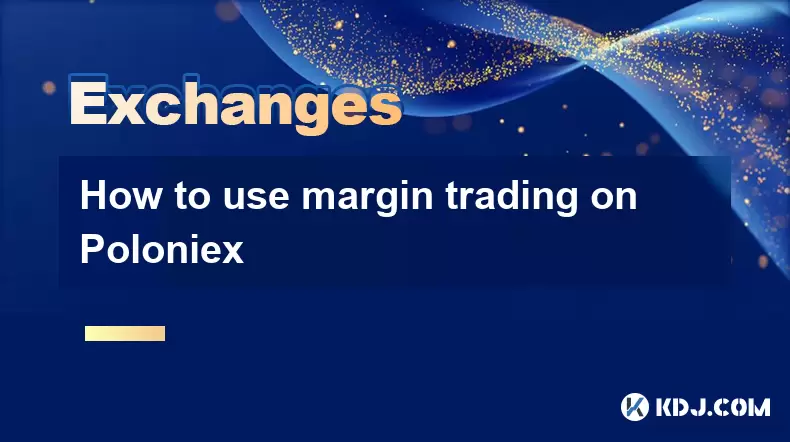
How to use margin trading on Poloniex
Aug 08,2025 at 09:50am
Understanding Margin Trading on Poloniex
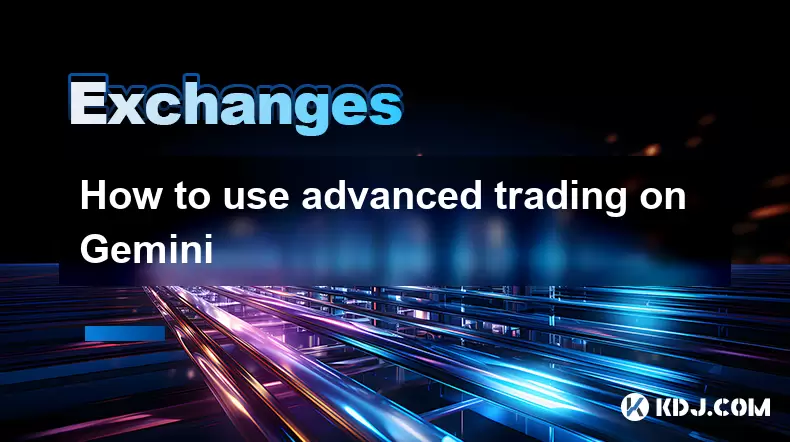
How to use advanced trading on Gemini
Aug 08,2025 at 04:07am
Understanding Advanced Trading on GeminiAdvanced trading on Gemini refers to a suite of tools and order types designed for experienced traders who wan...
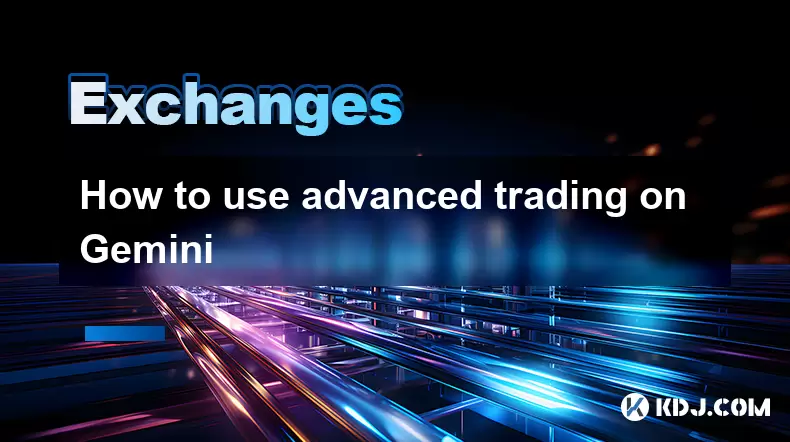
How to use advanced trading on Gemini
Aug 08,2025 at 10:56pm
Understanding Advanced Trading on GeminiAdvanced trading on Gemini refers to the suite of tools and order types available on the Gemini ActiveTrader p...
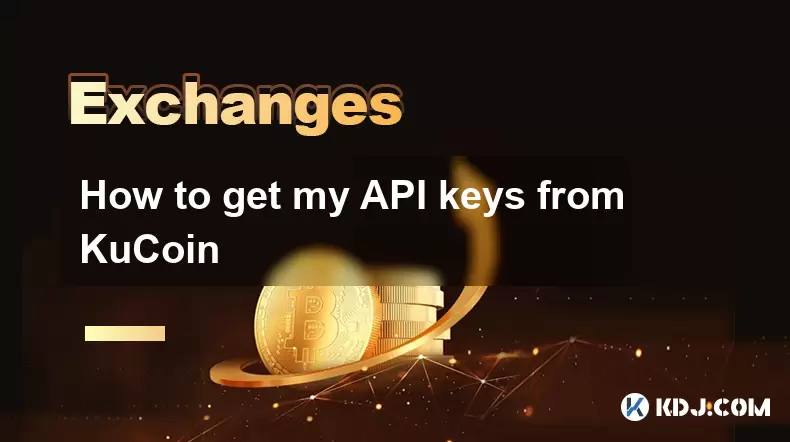
How to get my API keys from KuCoin
Aug 08,2025 at 06:50pm
Understanding API Keys on KuCoinAPI keys are essential tools for users who want to interact with KuCoin's trading platform programmatically. These key...
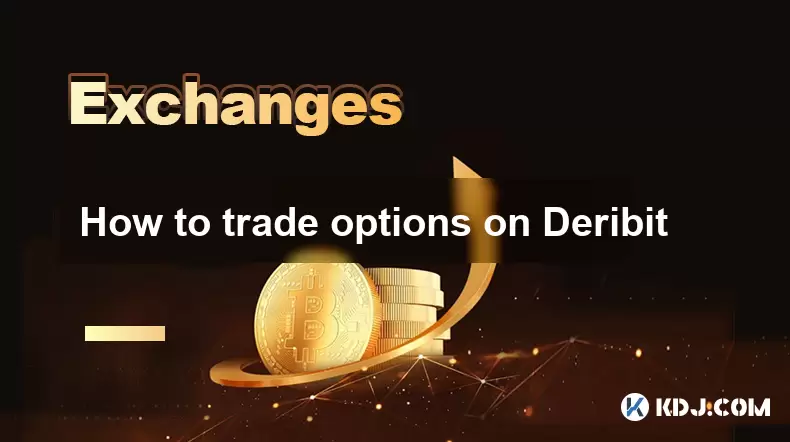
How to trade options on Deribit
Aug 09,2025 at 01:42am
Understanding Deribit and Its Options MarketDeribit is a leading cryptocurrency derivatives exchange that specializes in Bitcoin (BTC) and Ethereum (E...
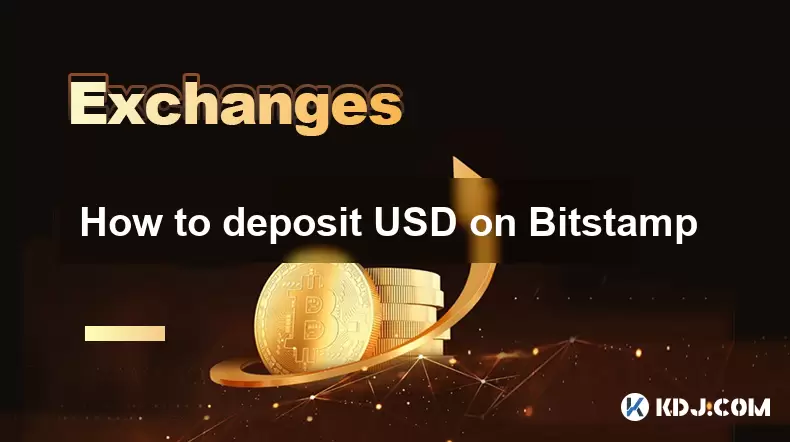
How to deposit USD on Bitstamp
Aug 07,2025 at 05:18pm
Understanding Bitstamp and USD DepositsBitstamp is one of the longest-standing cryptocurrency exchanges in the industry, offering users the ability to...

How to use margin trading on Poloniex
Aug 08,2025 at 09:50am
Understanding Margin Trading on Poloniex

How to use advanced trading on Gemini
Aug 08,2025 at 04:07am
Understanding Advanced Trading on GeminiAdvanced trading on Gemini refers to a suite of tools and order types designed for experienced traders who wan...

How to use advanced trading on Gemini
Aug 08,2025 at 10:56pm
Understanding Advanced Trading on GeminiAdvanced trading on Gemini refers to the suite of tools and order types available on the Gemini ActiveTrader p...

How to get my API keys from KuCoin
Aug 08,2025 at 06:50pm
Understanding API Keys on KuCoinAPI keys are essential tools for users who want to interact with KuCoin's trading platform programmatically. These key...

How to trade options on Deribit
Aug 09,2025 at 01:42am
Understanding Deribit and Its Options MarketDeribit is a leading cryptocurrency derivatives exchange that specializes in Bitcoin (BTC) and Ethereum (E...

How to deposit USD on Bitstamp
Aug 07,2025 at 05:18pm
Understanding Bitstamp and USD DepositsBitstamp is one of the longest-standing cryptocurrency exchanges in the industry, offering users the ability to...
See all articles

























































































